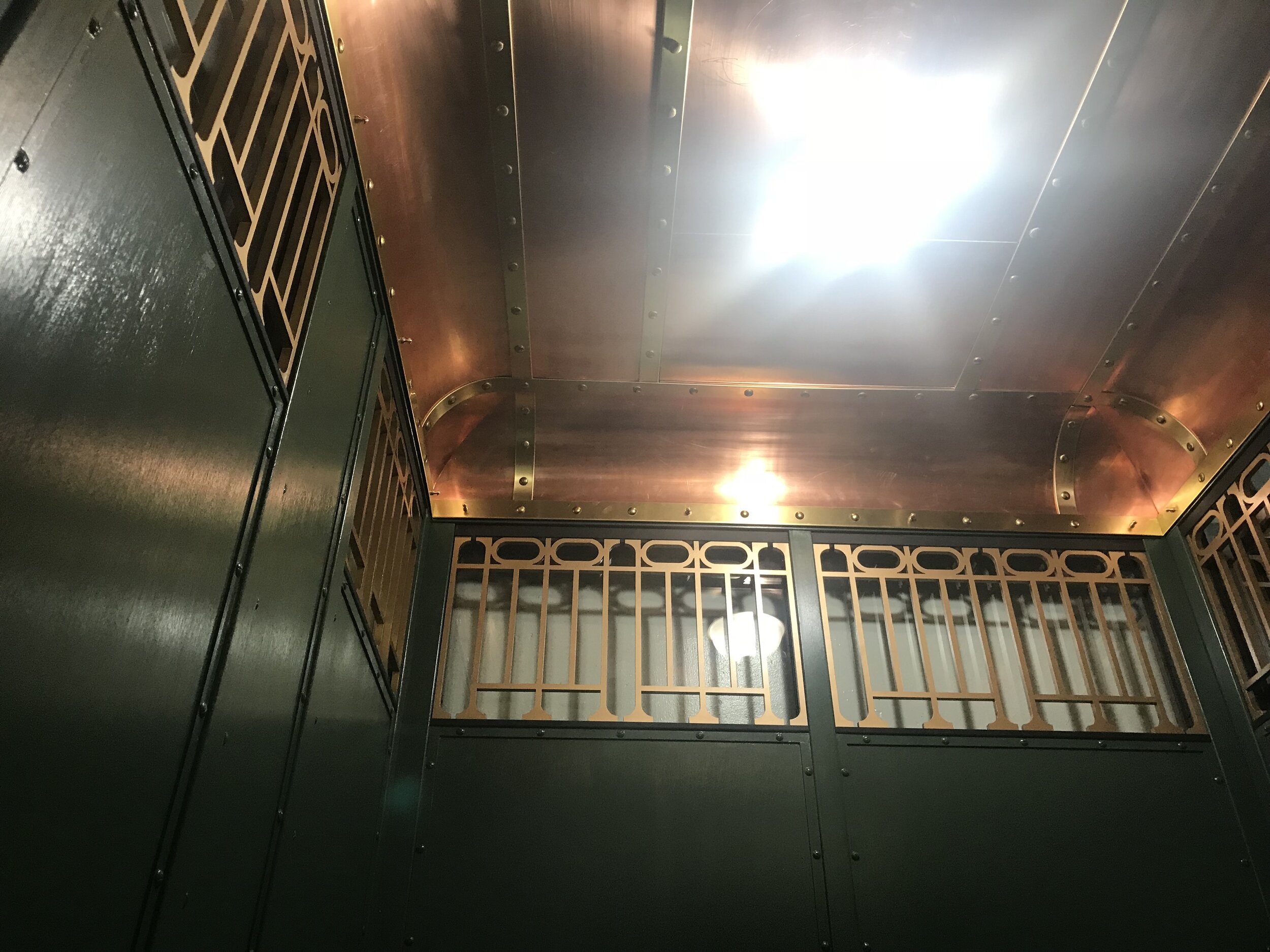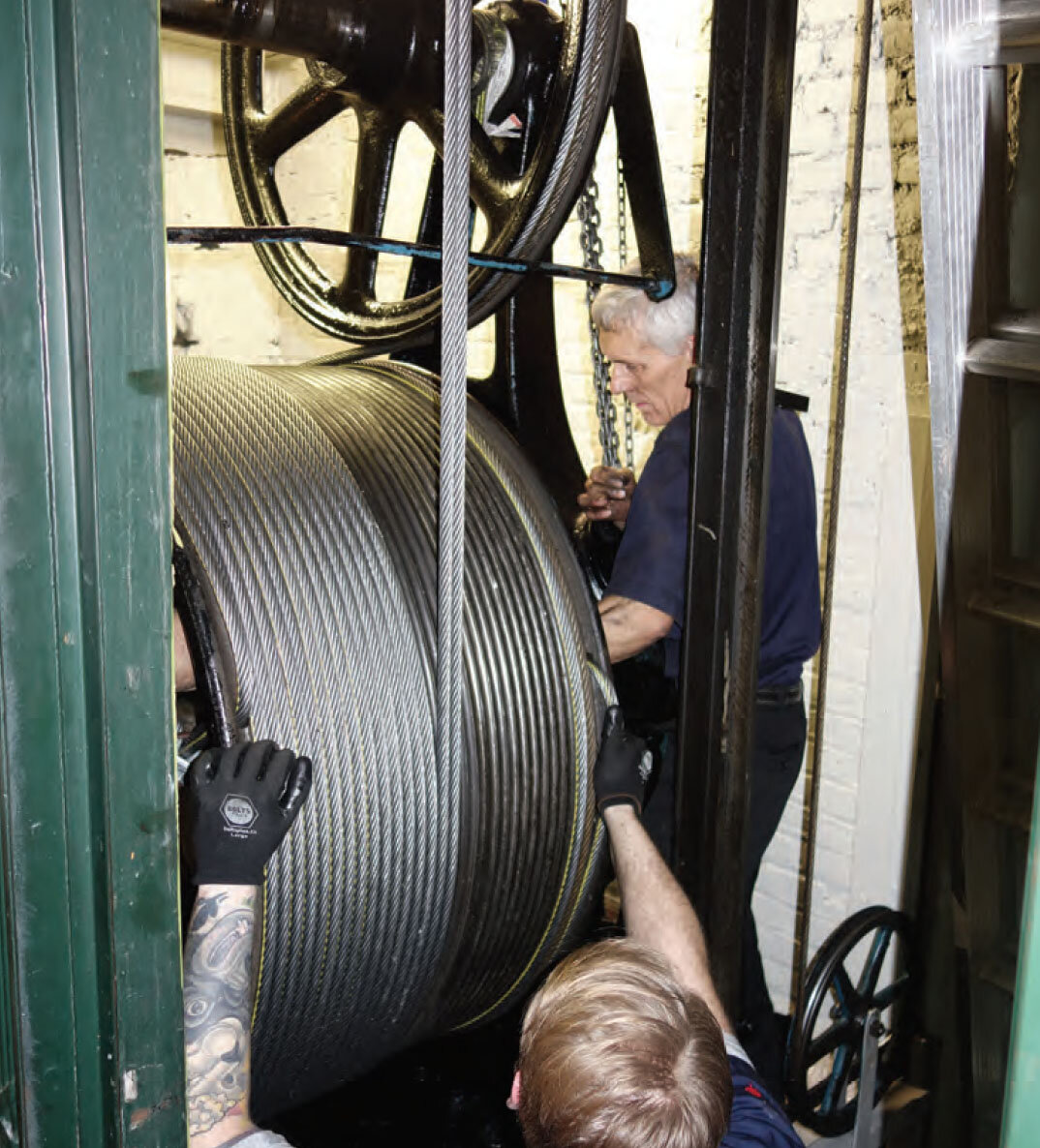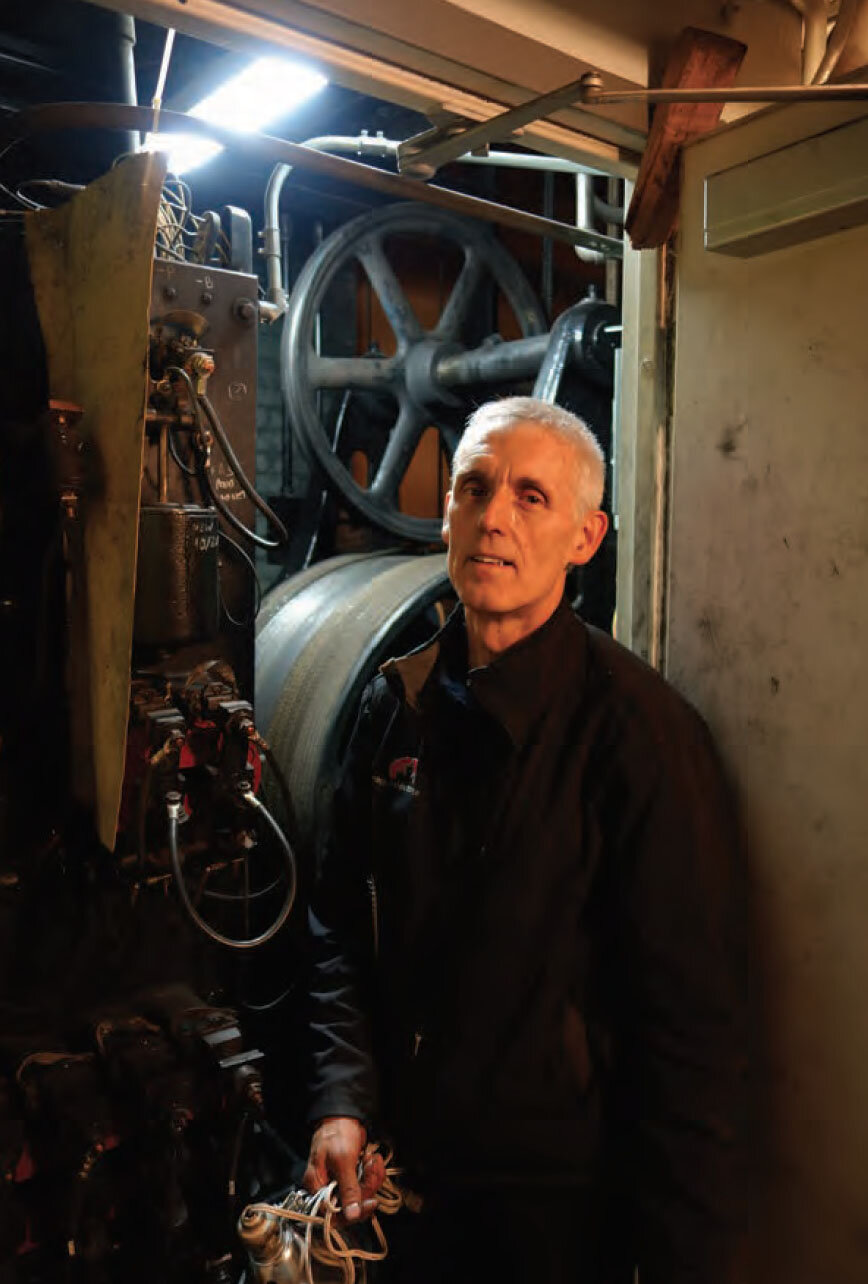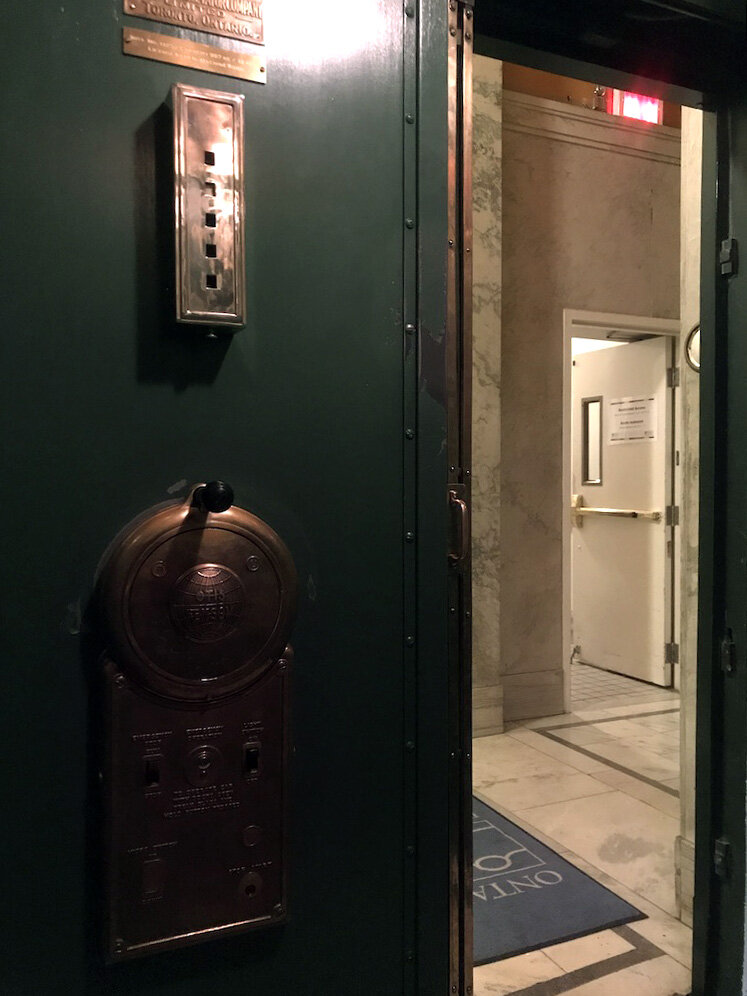1908 Otis Fensom Heritage Lift Finds its Former Glory at Ontario Heritage Trust
1908 Otis Fensom Replica Elevator Cab
2018/8/01/1908-otis-fensom-heritage-lift-finds-its-former-glory
Article written by Ali McGee and the staff of KJA Consultants Inc.
We’re waiting at the door of the elevator, Romas Bubelis and I. The car passes us by. “Be right back,” a real, live human elevator operator calls out through the elevator door into the hallway as he sails on by in his century-old machine. “Got someone to pick up one floor up.”
This is what it feels like when a “working artifact” morphs off the pages of history and into today. This particular artifact is located in the Birkbeck Building at 10 Adelaide Street East, Toronto, a historic 1908 building that houses the headquarters of the Ontario Heritage Trust. Bubelis is the trust’s architect and the man who decided to rebuild the elevator to look and operate as it did in 1908, the year the building opened.
As Bubelis points out, you don’t walk into your nearest Canadian Tire (the leading automobile parts store in Canada) to buy the parts to repair either a Model T Ford (also introduced in 1908) or an elevator born near the beginning of the last century.
He still shakes his head over the luck that led him to Rob Isabelle, chief operating officer of KJA Consultants, Inc., the largest elevator consulting firm in Canada.
Bubelis already had start-up funding from a Parks Canada program to help restore heritage places. The next step was to put together a qualified team to do the work. Isabelle was interviewed for a feature article in a major Canadian newspaper as an expert in elevators. “That piqued my interest,” said Bubelis, who demonstrates a passion for his working artifacts. “I ran my ideas by him, and he assured me it could be done.” Bubelis engaged KJA as the prime consultant, and
KJA brought Mark Ockwell back from retirement as project manager. “It was a hair-puller at times,” Ockwell says, but, adding with a grin, “I’d do it again in a heartbeat.” To his knowledge, the project was unique. “The mandate was to make the elevator look and operate like it did in 1908, and no one has ever done that.”
KJA Vice President Ian Hambly was key in figuring out whether the project was possible at all, because, Ockwell says, he could make sense out of the old equipment at a glance. “As soon as Ian opened the door, he looked at this and said, ‘Yeah, we can do that. We can rebuild that.’”
KJA started by drawing up specifications for the machine and its parts so the Heritage Trust could go to tender. It was no easy task, given that the elevator had been repaired and modified over the course of more than 100 years, Bubelis says. Pieces of the restoration puzzle ranged from the cloth-covered wiring used at the turn of the 20th century, to new “old” faceplates for the push buttons in the halls to call the elevator operator for a pickup.
It took some serendipity to make it all happen, but the people involved in the project made the most of their own luck. Case in point: Hambly “just happened” to have an original Otis-Fensom Elevator Co. Ltd. faceplate for hall push buttons from a project he’d handled a few decades ago, and he “just happened” to have kept that piece of history all those years. Ockwell and Bubelis put their heads together on the artifact. Eventually, they thought of and found a 3D-printing company that could make a mold of the original faceplate. Then came the quest for a foundry. The managers had to be so enamored of the project that they would interrupt production runs in the thousands to produce a mere dozen authentic faceplate replicas.
Then, there’s the original Otis-Fensom car switch, which the operator wields to direct the machine up or down, and make it glide into line at the right floor. “Doing that takes real skill,” Bubelis notes.
The switch in the Ontario Heritage Trust elevator came from Ernie Cox of Vertex Industries, Ltd., who “just happened” to have kept that switch, having hung it on his office wall. He donated the switch to the project, which was a labor of love for him, too.
Bubelis says Ockwell, Cox and Phil Warne of True Canadian Elevator Maintenance Co. Ltd. are all guys who just want to get in there and go to work on this kind of project. Bubelis confesses that he loves working with senior executives who still love getting their hands dirty.
That kind of passion, which seems to have infected everyone involved in the job, did make life a little difficult at times. At one point, a gang of husky young men had to transport the 1,200-lb., irreplaceable elevator controller from one floor to another via the stairs. Ockwell says he knew they’d make it — but what if they dropped it? “I had to walk away,” he says with a rueful smile. “I couldn’t stand it.”
Bubelis says the heritage community is intensely interested in the project. He’s delighted to be able to demonstrate that an elevator of this age really can be brought back to life and that it should be. “The point of the working artifact is that it is living heritage. . . reminding us of how everyday people like us lived in an era so different than ours,” he wrote in a “meditation” circulated to staff.
His meditations on the project’s progress were devoured by the people who work at 10 Adelaide. Yes, they were interested in the project as a restoration, but what they really wanted to know was when it would be finished so they could stop using the four flights of stairs in their historic office. The project started in January 2017, and all the major pieces were in place by the end of March this year. “We’ve had a lot of very fit people,” Bubelis says wryly.
Bubelis has installed glass doors on the machine room so people can safely study the mechanical heart of his working artifact. “Nobody else wants anyone to see their equipment room, but we do,” he says. This project, he says, will make it easier for others to recreate pieces of history like this. He can now offer the chance to examine working machinery as it operated in 1908, parts specifications developed from scratch and a new pool of experienced people to draw on for re-creation, restoration and repair.
“This project will be a touchstone for a lot of elevator guys,” Ockwell says. “I anticipate that they’ll come from all over North America to see it in operation.” The scope of work included refurbishing the machine, controller, cab, fixtures, entrance equipment, safeties, governor and all ancillary equipment, bringing the system back to original condition.
Credits
Elevator contractor: True Canadian Elevator (Phil Warne)
Project management: KJA Consultants (Ian Hambly and Mark Ockwell)
Cab design: JNKM Design (Josh Nelson)
Cab manufacturing and flooring: K Elevator/AVT Beckett Elevator
Cab copper ceiling fabrication: Heather + Little
Hall station and capacity plate engraving, and hall station jewel fabrication: Imperial Engravers
Custom wood turning: The Postman
Bostwick gate restoration: Tyler Williams
Fixtures: Vertex Industries (Ernie Cox)
3D modeling and casting molds: Agile Industries
Brass castings: Gamma Foundries






























